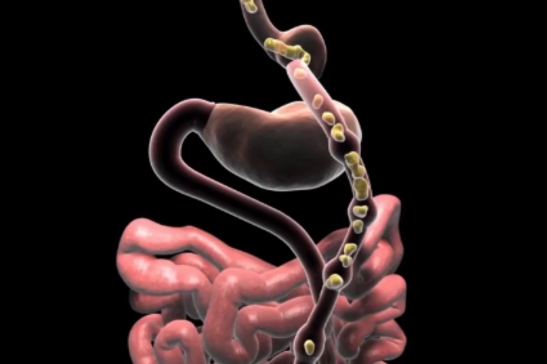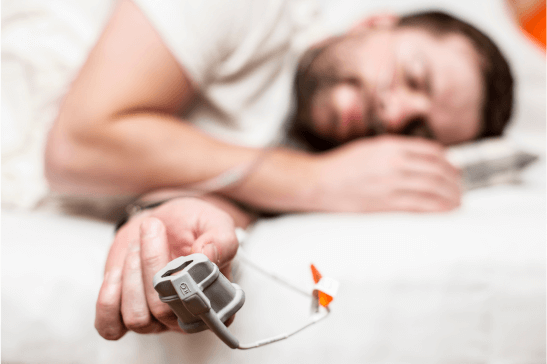Gastric Banding at Obesity Solutions
Welcome to Obesity Solutions, where we understand that your journey to better weight control is as unique as you are. Our advanced gastric band surgery and procedure options are all designed with you in mind. We provide our patients with tailored solutions that yield lasting results. With a gastric band fitted, you can control your food intake with a smaller stomach and embrace a new, healthier version of yourself.
Contact Us for a Consultation
Understanding Gastric Bands: Before & After
Gastric banding is a surgical procedure that helps patients with weight loss. During the process, a silicone band is placed around the upper part of the stomach, creating a small pouch that limits food intake. After the procedure, the amount of food the stomach can hold is restricted, leading to feelings of fullness with smaller portions. Patients, compared to before a gastric band is fitted, typically eat less and find it easier to control their weight.
The Mechanics of Adjustable Gastric Bands
A gastric band can be adjusted by injecting saline into a port under the skin, allowing for personalised weight loss goals to be achieved with a unique solution. It’s a reversible procedure with potential risks and benefits. This non-invasive procedure allows doctors to tighten or loosen the band. This adjustment process allows the level of food intake to be carefully targeted. This aspect of gastric band procedures aids in weight loss and control over time.

The Role of Gastric Banding in Sustainable Weight Management
A gastric banding procedure reduces the stomach’s capacity to promote portion control and restrict calorie intake. A smaller stomach influences metabolic processes too meaning patients with a gastric band are better placed to manage hunger. It achieves this with relatively rapid recovery, compared to more invasive procedures, with a smaller chance of wound infections and hernias after surgery too. If it is suitable for your condition, gastric band weight loss is likely to be as sustainable as more invasive options.
Beyond Weight Loss: Gastric Bands & Improving Overall Health
Gastric band surgery provides health improvements beyond just simple weight control. Aside from weight loss, patients often also experience enhanced cardiovascular health, reduced joint pain and greater strength and endurance.
Lowering excess weight can also alleviate sleep apnea symptoms, resulting in better sleep quality and daytime alertness. It can also contribute to remarkable improvements in a patient’s mental well-being – leading to increased self-esteem and confidence.

The Benefits of Gastric Band Weight Loss
Gastric band operations offer several benefits for individuals struggling with obesity and weight control. By restricting the capacity of a patient’s stomach, they promote food portion size management and weight control. This in turn can lead to improved overall health and reduced risk of obesity-related conditions such as type 2 diabetes and heart disease. Unlike other weight loss surgeries, gastric banding is reversible and adjustable, providing flexibility and control. It also, typically, involves a shorter recovery time and lower risk of surgical complications than more invasive procedures. This makes gastric banding a safer option for some patients.

Reduced Risk of Obesity-Related Medical Conditions
One of the most important benefits of achieving weight loss through a gastric band is a reduction in the risk of serious, life-threatening disease. Severe obesity is a major cause of premature death from heart disease, stroke, diabetes, high blood pressure, high cholesterol, liver disease, certain cancers and more. Other conditions that can be avoided with gastric banding include shortness of breath, nerve pain, arthritis, back pain, heartburn, leg swelling and varicose veins. If you are suffering any of these symptoms, we recommend seeking professional medical advice. If weight is affecting your overall health and well-being, perhaps it is time to consider a gastric band procedure.
Gastric Band Procedures, Weight Loss and Metabolic Health
The gastric band procedure reduces the stomach’s capacity to promote portion control and restrict calorie intake. It also influences metabolic processes and the anatomy of the stomach to manage hunger. Gastric banding reduces hunger by restricting the stomach’s capacity, leading to feelings of fullness with smaller food portions.
Additionally, the band slows down the emptying of food from the stomach into the digestive system prolonging the feeling of satiety. This helps individuals consume fewer calories, aiding in weight loss and appetite control.


Enhancing Quality of Life Through Sustainable Changes
The good news is gastric band procedures are only the start of your journey towards healthier living. Losing weight is, understandably, the primary reason to have surgery but our treatments never work in isolation. Success comes from changing your relationship with food, exercise, body image, confidence and countless other areas in your life. Our aftercare, following your procedure, will help you form new, positive habits that will make any changes permanent. Interventions like gastric bands have the potential to have a positive impact on every aspect of your future, both immediately and over the years to come.
The Gastric Banding Process
Gastric band procedures are considered to be amongst the safest and most effective options for individuals struggling with obesity. Gastric banding is an adjustable and reversible step towards greater control and reduced appetite. It involves placing a silicone band, sometimes called a gastric Lap Band around the stomach. This gastric Lap Band reduces stomach capacity and slows the passage of food through a patient’s system – retraining the body to eat less. This minimally invasive approach reduces the risk of complications, minimises the chance of infection and ensures recovery times are relatively short. The procedure has been performed for many years with a significant track record of safety and effectiveness.
Preoperative Evaluation and Candidate Selection
While gastric band surgery is straightforward and low risk, it is still essential for individuals considering this option to consult with qualified healthcare professionals before electing to have the procedure. The good news is we are well-placed to assess patients’ specific circumstances, screen them for suitability and provide personalised guidance on weight loss strategies.
Gastric surgery procedures, such as gastric banding, are generally suitable for individuals with a body mass index (BMI) of 40 or higher, or those with a BMI of 35 and above with obesity-related health issues.
However, BMI is only ever used as a guide. Our careful patient selection process will identify if it is the right choice for you.


Surgical Techniques: Placing and Adjusting the Gastric Lap Band
Placing a gastric lap band around a patient’s stomach involves making small incisions in the abdomen, through which the band is inserted and wrapped around the upper portion of the stomach. This creates a smaller stomach pouch, limiting food intake.
Adjustments to the band are made by injecting or removing saline solution via a port left under the skin. Altering the band’s tightness will optimise its impact and help weight loss.
These procedures are minimally invasive and offer customisable weight loss solutions.
Minimally Invasive Surgery: Safety and Recovery
Minimally invasive gastric band surgery offers enhanced safety and quicker recovery for weight loss and weight control patients. Surgeons place an adjustable band around the stomach through very minor incisions. Compared to more open types of surgery, this approach minimises risks of infection, bleeding, and scarring, while also reducing post-operative pain and hospital stays. Patients typically resume normal activities sooner, with fewer complications. However, close follow-up is still necessary for band adjustments and monitoring weight loss progress. Minimally invasive gastric band surgery continues to be a safe and effective option for those seeking sustainable weight loss with minimal downtime.
Taking the Next Step Towards Gastric Banding
If you want to start your journey towards a healthier, happier life, why not book a consultation with our experts today? We can help you with how much a gastric band costs, for example, and give you all the information you need to make an educated decision. If you are still exploring your weight loss surgery options, you can read comments from our customers below.



Frequently Asked Questions

De resultaten van gewichtsverlies verschillen van patiënt tot patiënt. Het totale gewicht dat u verliest, hangt af van verschillende factoren. Zo moet de maagband op de juiste manier afgesteld worden en moet u zich inzetten voor uw nieuwe levensstijl en gezonde eetgewoonten.
The gastric band procedure has the lowest risk of all permanent weight loss procedures. It is minimally invasive and, unlike gastric sleeve or gastric bypass, procedures, there is no permanent alteration of the stomach or intestine.
De meeste mensen kunnen overtollige huid tot een minimum beperken door gezonde voeding, lichaamsbeweging en gewichtstraining. Maar als u overtollige huid moet laten verwijderen, kunnen wij u helpen bij het zoeken naar een plastische chirurg.
Nachtkledij, handdoek, zeep, toiletgerief, medicatie (die u thuis ook inneemt).
In week vier begint u al met oefenen om vaste voeding te eten. Vanaf dan mag u alle gezonde dingen eten zonder deze te malen of pureren. Na drie maanden hebt u het eetpatroon al heel goed herschreven.
U mag gedurende één maand niet tillen, niet sporten en vooral rustig aan doen!
Na twee weken (vanaf dag 12 na de ingreep) mogen de hechtingen verwijderd worden. Dit kan door een huisarts of verpleegkundige gebeuren. De steriele pleisters op de hechtingen na de ingreep kunnen blijven zitten voor de eerste twee weken op voorwaarde dat deze niet vervuild zijn of loslaten.